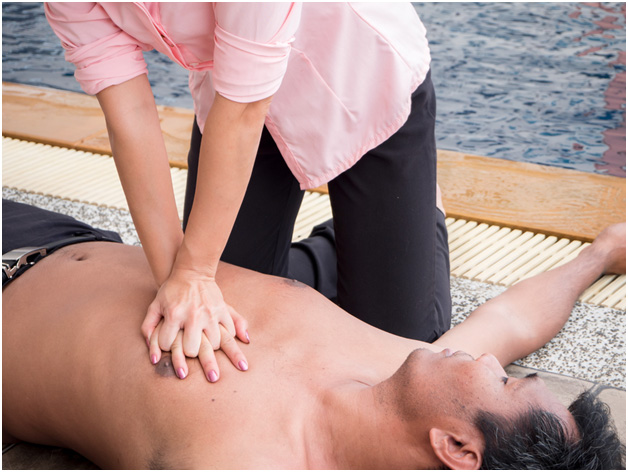
Cardiopulmonary resuscitation (CPR) delivers oxygen to the brain and other major organs until medical professionals arrive and can better administer care. It can save the life of someone whose heart or breathing has stopped by nearly drowning or heart attack.
This is serious stuff. If you know CPR, you can save a life and keep a person from brain damage. It is, quite literally, a life and death matter. Plus, you could end up in one of those dramatic recreations like they used to feature on Rescue 911! which could be your 15 minutes of fame.
The Red Cross tells the story of a young boy who fell into a pool and was pulled out after going unconscious. After being saved by CPR, admitted to, and then released from the hospital, his father had this to say:
Myles was dismissed from the hospital the next morning and, despite everything that happened, was adamant about going to Worlds of Fun. This was the best Father’s Day gift I could have ever received, watching my wife, son and daughter reunited and healthy, playing together again! No days are taken for granted any longer!
For this reason, the American Heart Association recommends CPR be administered by bystanders and those formally trained alike. When death is on the line, it’s better to do something to try to help than nothing.
Here are some guidelines. If you’ve never been formally trained in CPR, perform hands on CPR only. This is 100-120 compressions per minute with no more than a 10 second break between cycles.
If you’re well-trained, perform CPR and rescue breaths. If you’re rusty, stick to compressions.
In 2010 the American Heart Association made a startling change to the recommended CPR steps, stating that compressions alone can be as successful as compressions and breaths together.
Let’s be honest and admit that’s kind of a relief. Basically kissing a complete stranger isn’t always the most pleasant experience.
Let’s take a look at these steps to CPR.
Check The Vitals Of The Person
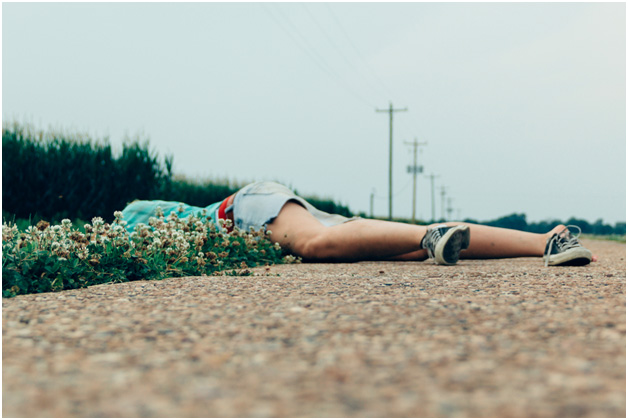
Perform the following steps:
- Check the scene for immediate danger. Make sure you are not putting yourself into harm’s way by going to the person. Is there a fire? Is there traffic? Live wires? If you are able to prevent danger, do so. If not, carefully pull the person to safety. Ideally you will place a blanket under the person to drag them.
- Check for consciousness. Tap the person on the shoulder and say loudly, “Are you OK?”. If they respond, CPR is not needed. In fact, it would be really odd, and possibly illegal if you began performing CPR on them.
You can apply first aid care or call 911 if you think it is still necessary.
- Call for help. If they do not respond and you are alone call for help. You want to get medical professionals on the scene as soon as possible. If someone is nearby, have them call and you can begin to perform CPR.
- Check for breathing. Unless you’re a trained professional do not take time to check for a pulse. Instead check for signs of breathing. See if the chest is rising and falling. Feel if there is air coming in and out of his or her mouth. If there is no signs of breathing follow these steps.
Begin Performing CPR
- Remember the acronym CAB. While administering CPR, use CAB to remember the correct order of the steps to CPR. The letters stand for compressions, airway, and breaths.
- Do compressions to restore blood circulation. Place the victim on his or her back. He or she must be lying as flat as is possible during compressions for safety. Slightly tilt their head back.
Put the heel of one hand on the breastbone 2 finger-widths above where the lower ribs meet. This will be right between the nipples. Put your other hand on top of the first, palm down. Interlock the fingers of your second hand with the fingers of your first hand. Position yourself directly over your hands. Keep your arms straight and rigid.
Perform 30 chest compressions pushing the chest down no more than two inches. Do this at the rate of 100-120 compressions per minute.
The rate of compressions would keep the beat to a song such as “Stayin’ Alive”. Sing that in your head to get the right rhythm if it helps. Or you could sing it out loud, which may either have a positive or negative effect on the person in question, depending on their preference for disco.
- Clear the airway. Place one palm on the victim’s forehead and lift his or her chin with your other hand. Gently pull back the head to look inside the mouth and see if there is any obstruction. If you see something obvious in the airway, such as a large football, remove that first.
Take no more than 10 seconds to look for signs of breathing. Is the chest moving up and down? Can you feel breath coming out of the mouth?
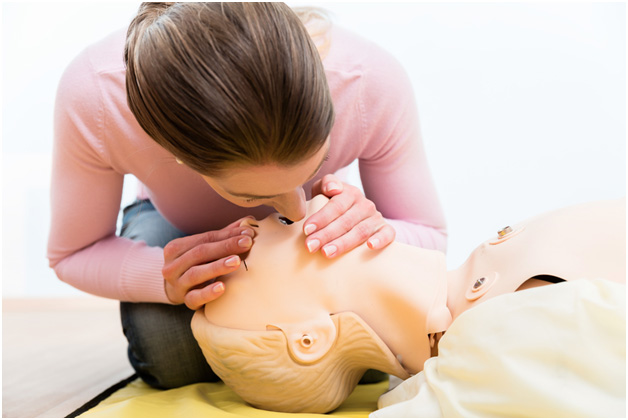
- Give rescue breaths. With the airway open, give 2 rescue breaths if you are trained in CPR. Give a one-second long rescue breath. If you see the chest rise, give a second breath. If it does not rise, tilt the head and lift the chin again. Then proceed to try your second breath.
If there is no sign of your breath entering the lungs, perform the Heimlich Maneuver. Straddle him or her with your face facing theirs. Place one fist just above the belly button and the other on top of the first hand. Thrust a few times. You are doing this to dislodge anything that may be blocking the trachea. If this is unsuccessful resume CPR.
- Begin again with CAB. Thirty compressions and 2 breaths are considered one cycle. After giving two breaths, resume compressions. Continue CPR until there is movement or help arrives. If you are taking turns performing CPR with another person, minimize breaks between switches.
Using an Automated External Defibrillator
- If you are too exhausted to continue, use an Automated External Defibrillator (AED) if one is available. This is used to jumpstart a person’s heart. Before you turn it on make sure there are no puddles or standing water near by.
Seriously. Using an AED in or around water can be a shocking experience. Yes, that was a terrible joke. No, we won’t take it back.
- Turn on the AED and follow the prompts.
- Fully expose the chest. Make sure the chest is dry. If he has thick chest hair and you are able, shave spots where the AED pads go. Shave kits are included in most AED kits. Be sure not to cut the victim when you shave him, as this can interfere with rhythm analysis.
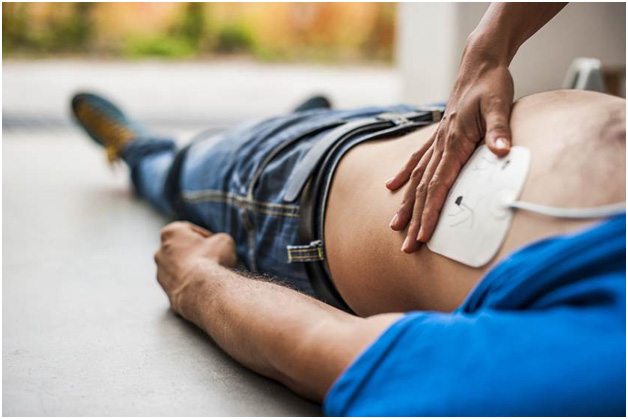
- Remove any metal the person has on his or her body. Take off earrings, necklaces, piercings, and underwire bras. Also look for evidence of a pacemaker. This should be indicated by a medical bracelet. If you believe the person has a pacemaker you need to keep the AED pads at least 1 inch from the location of the pacemaker.
- Attach the sticky pads that are connected to electrodes to the victim’s chest. Follow the directions in the kit when determining pad placement.
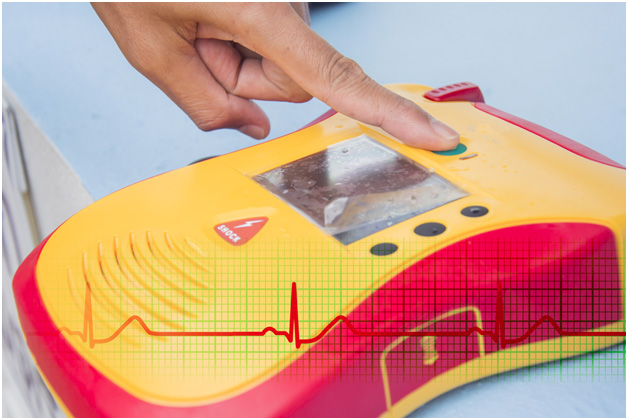
- Analyze and apply shock. First be sure that no one is touching the body. Press analyze on the AED, and it will tell you if shock needs to be administered.
- Leave sticky pads on the victim and resume CPR for another 5 cycles.
Put the Patient in Recovery Position
- Once the victim is stabilized and breathing normally, place him or her in the recovery position.
If any funny jokes came to mind while you were performing CPR, you can finally tell them. Although, come to think of it, most people probably won’t find them funny at this point, so maybe save them for later.
- This is a lateral recumbent or three-quarters prone position. Gently turn him or her to their side. Bend top knee and use it to keep the body from rolling onto its stomach. Bend both elbows and use them to prop up the body. This position allows victim to breathe more easily. The mouth is facing downward which prevents choking and suffocation.
Conclusion
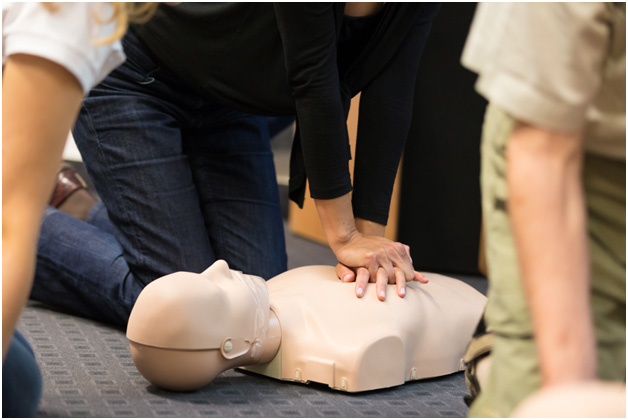
This in-depth step-by step guide should instill confidence so that when a person is in danger and needing CPR, you will be able to administer it.
Ideally we would all take an accredited course that includes first aid, CPR, and AED. But remember that it is always better to try and help than to stand by and do nothing.
And if you do CPR on someone, you could also end up marrying them, just as happened to this couple:
Turns out learning CPR can saves lives and improve your love life.
This article originally appeared here at http://www.cprcertificationtrainingonline.com/how-to-perform-cpr/ and has been republished with permission.



